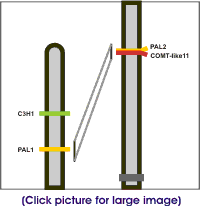| References |
Blanc G, Hokamp K, Wolfe KH (2003) A recent polyploidy superimposed on older large-scale duplications in the Arabidopsis genome. Genome Res 13: 137-144 Bowers JE, Chapman BA, Rong J, Paterson AH (2003) Unravelling angiosperm genome evolution by phylogenetic analysis of chromosomal duplication events. Nature 422: 433-438 Ermolaeva MD, Wu M, Eisen JA, Salzberg SL (2003) The age of the Arabidopsis thaliana genome duplication. Plant Mol Biol 51: 859-866 Force, A., Lynch, M., Pickett, F.B., Amores, A., Yan, Y. l., and Postlethwait, J. (1999). Preservation of duplicate genes by complementary, degenerative mutations. Genetics 151, 1531-1545 Hughes, L. (1994). The evolution of functionally novel proteins after gene duplication. Proc. R. Soc. Lond. B 256, 119-124 Piatigorsky, J., and Wistow, G. (1991). The recruitment of crystallins: New functions precede gene duplication. Science 252, 1078-1079 Prince, V.E., and Pickett, F.B. (2002). Splitting pairs: The diverging fates of duplicated genes. Nature Rev. Genet. 3, 827-837 Raes J, Vandepoele K, Saeys Y, Simillion C, Van de Peer Y (2003) Investigating ancient duplication events in the Arabidopsis genome. J Struct Funct Genom 3: 117-129 Simillion C, Vandepoele K, Van Montagu M, Zabeau M, Van de Peer Y (2002) The hidden duplication past of Arabidopsis thaliana. Proc Natl Acad Sci USA 99: 13627 13632 |
|
|
| Problems? Contact Jeroen Raes |
| Go to Bioinformatics home page, Tree Biotechnology homepage |
